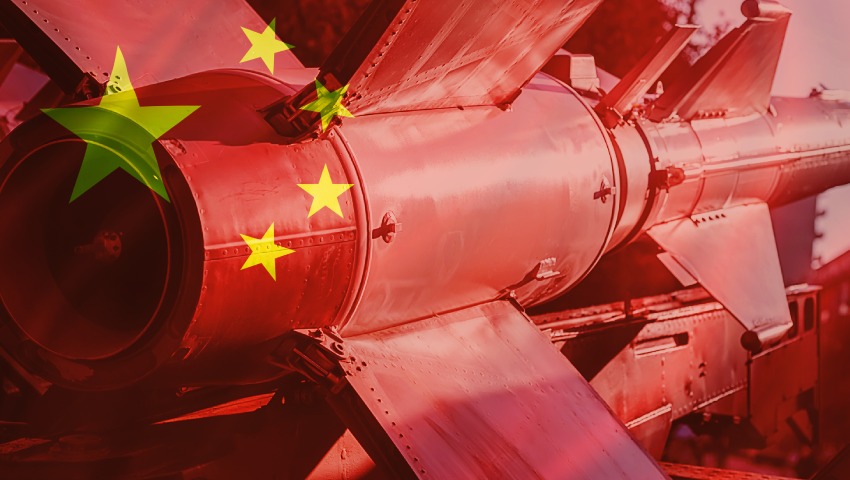How should Australia prepare for the potential launch of a missile attack from China? A former deputy secretary of the Department of Defence weighs in.
To continue reading the rest of this article, please log in.
Create free account to get unlimited news articles and more!
Earlier this year, Hu Xijin, the editor-in-chief of Beijing’s Global Times — which effectively serves as the Chinese Communist Party’s (CCP) propaganda mouthpiece — threatened “retaliatory punishment” against Australia if it came to the aid of the US in the event of a clash.
“China has a strong production capability, including producing additional long-range missiles with conventional warheads that target military objectives in Australia when the situation becomes highly tense,” he wrote.
Such threats have prompted observers to examine Australia’s preparedness for a missile strike.
Paul Dibb, emeritus professor of strategic studies at the Australian National University and former deputy secretary of the Department of Defence, says Australia’s current strategy is highly dependent on a US response.
Dibb suggests that Australia consider acquiring a missile system capable of thwarting a potential attack.
“The first step could be to fit this capability to the air warfare destroyers, while noting that a nationwide capability would need to be much more extensive,” he writes in ASPI’s The Strategist.
However, Dibb acknowledges that Australia would ultimately depend on US support, and as such, calls on policy makers to seek a “much clearer commitment” from Washington and a better understanding of its extended deterrence policy for both conventional and nuclear missile attacks.
This is particularly pertinent given uncertainty over China’s readiness to deploy nuclear warheads, with the CCP ramping up proliferation of inter-continental ballistic missiles (ICBMs).
“US estimates suggest that China is planning to double its strategic nuclear forces and recent media reports claim that Beijing is building more than 100 new silos for intercontinental ballistic missiles in the northwest of the country,” Dibb flags.
“If true, this is a strange development because ICBMs in fixed silos are becoming more vulnerable with the increased accuracy of nuclear strikes. China’s recent ICBMs have been road-mobile for precisely this reason.
“The only rational explanation for new fixed-silo ICBMs is that they’re designed for a new launch-on-warning posture, which suggests new developments in China’s early warning capabilities.”
The former deputy secretary also notes that Beijing possesses approximately 2,000 theatre nuclear missiles capable of targeting much of the Indo-Pacific, most of which are nuclear-armed.
“The main point here for Australia is that unless we acquire missiles with ranges in excess of 4,000 kilometres, we won’t be able to retaliate against any attack on us,” Dibb continues.
“But, in any case, for a country of our size to consider attacking the territory of a large power like China isn’t a credible option.”
As such, Australia would need assurance from Washington that any missile attack would provoke an immediate response by the US.
The United States’ “overwhelming superiority” in precision missile technology, he adds, would serve as an effective deterrent, given China’s population density and the geographical distribution of its population.
“The virtual conurbation that extends from Beijing in the north via Shanghai to Guangzhou and Shenzhen in the south would make it particularly susceptible to massive destruction in an all-out nuclear war,” Dibb notes.
The US currently boasts 1,500 deployed strategic nuclear warheads and another 5,000 stockpiled or ‘retired’, which Dibb says would be “more than enough” in a conflict with both China and Russia.
“In the Cold War, the Pentagon planned on destroying a quarter of the Soviet Union’s population and half its industry. For comparison, a quarter of China’s population is about 350 million,” he observes.
“In such a nuclear war, China would no longer exist as a functioning modern society.”
Get involved with the discussion and let us know your thoughts on Australia’s future role and position in the Indo-Pacific region and what you would like to see from Australia's political leaders in terms of partisan and bipartisan agenda setting in the comments section below, or get in touch with
Charbel Kadib
News Editor – Defence and Security, Momentum Media
Prior to joining the defence and aerospace team in 2020, Charbel was news editor of The Adviser and Mortgage Business, where he covered developments in the banking and financial services sector for three years. Charbel has a keen interest in geopolitics and international relations, graduating from the University of Notre Dame with a double major in politics and journalism. Charbel has also completed internships with The Australian Department of Communications and the Arts and public relations agency Fifty Acres.

 Login
Login








